EURODAIRY
2016
A Europe-wide thematic network supporting a sustainable future for EU dairy farmers
The future of innovation in European agriculture and forestry is based on the improved (digital) exchange of best practices between farmers, researchers and advisors from different sectors and member states.
EURAKNOS is the sister project of EUREKA
We facilitate and support thematic networks by connecting and extending the current network of thematic networks.
We collect knowledge, materials and tools of the thematic networks.
We develop an EU-wide open source agricultural knowledge innovation database.
2016
A Europe-wide thematic network supporting a sustainable future for EU dairy farmers
2016
EuroDairy is coordinated by THE AGRICULTURE AND HORTICULTURE DEVELOPMENT BOARD (AHDB)
The thematic network will foster development and dissemination of practice-based innovations in dairy farming on key sustainability issues for the post-quota era. Work Package 1 (Project co-ordination) oversees formation of the Thematic Network, ensures interconnectivity in generation, capture and demonstration of innovation and best practice, and reports project outputs including recommendations for further innovation-driven research. WP 2 (Network of innovating pilot farmers and Knowledge Transfer Centres) establishes a community of innovating dairy farmers which through experience and practice on their own farms, bring good ideas and implementable solutions to EuroDairy. The farms participate in regional multi-actor operational groups, and connect as a network to share knowledge across borders.
2016
Transfer of INNOvative techniques for sustainable WAter use in FERtigated crops
2016
FERTINNOWA is coordinated by PROEFSTATION VOOR DE GROENTETEELT
In European countries, the cultivation of fertigated crops experience scarcity of water, and the intensity of cultivation poses significant risks to water quality. The main objective of the FERTINNOWA thematic network is to create a meta-knowledge database on innovative technologies and practices for fertigation of horticultural crops. FERTINNOWA will also build a knowledge exchange platform to evaluate existing and novel technologies (innovation potential, synergies, gaps, barriers) for fertigated crops and ensure wide dissemination to all stakeholders involved of the most promising technologies and best practices.
A multi-actor integrated approach will be used through the FERTINNOWA platform which will involve various stakeholders (researchers, growers, policy-makers, industry, environmental groups etc.) at several levels including the socio-economic and regulatory level (national and European) with a special focus on the EU Water Framework Directive and Nitrate Directive.
2013
Sustainable Water treatment and Nutrient reuse options
2013
SUWANU is coordinated by BIOAZUL, SL
Agricultural practices put the biggest pressure on fresh water resources for irrigation (55% of the water use in Europe) and on fertilizer usage. The European farmers face serious problems such as freshwater scarcity and nutrient availability, extreme climate conditions and the growing demand of the increasing population. This results in rising prices for mineral fertilizers and food, risky measures such as untreated wastewater applications on fields, and environmental damages from overexploitation of resources.
Even though important local efforts have been made on research activities and initiatives for wastewater treatment and reuse in agriculture, an integrated approach is needed among regions which are developing such research, incentivizing scientific, governmental and business collaboration within wastewater reuse in Europe and supporting the establishment of common European guidelines and parameters for water and nutrient exploitation efficiency.
2017
Shared Innovation Space for Sustainable Productivity of Grasslands in Europe
2017
INNO4GRASS is coordinated by GRUENLANDZENTRUM NIEDERSACHEN/BREMEN E.V.
Grasslands are vitally important for European agriculture. The 20 partners of Inno4Grass gather farmers’ organisations, extension services, education and research in eight countries (Germany, Belgium, France, Ireland, Italy, the Netherlands, Poland & Sweden) where grasslands contribute a major share of the agricultural area. The overall objective of the project is to bridge the gap between practice and science to ensure the implementation of innovative systems on productive grasslands to achieve profitability while providing environmental services. The associated animal productions are dairy and beef cattle and sheep.
EURAKNOS presents key findings relating to improving the sustainability of EU Thematic Networks and their results.
Watch the Recorded sessions:
The Explorer's Guide to Thematic Networks
Here is the last EURAKNOS newsletter. We will talk about:
* The final conference on the 26th of February
* National events
* Exploitation Strategy Seminar
* Video EURAKNOS to EUREKA
* Last consortium meeting



“EURAKNOS can be seen as the network of the networks that will analyze this knowledge to explore the feasibility of creating a modular database that makes this information more accessible to the farming community in a searchable and semi-standardized way."
“It is a really good idea to make a knowledge base, which comprises knowledge from several European countries. It is a place where farmers, advisors and everyone interested in agriculture can get inspired on how to innovate”
“Sharing knowledge to promote new technology - such as sensors to monitor livestock 24/7 - has resulted in increased feed efficiency, improved animal welfare, increased profitability and lower greenhouse gas emissions. The EURAKNOS TN will ensure this knowledge is reached by an even wider audience, helping to further the success of the 4D4F network.”
“One of the key learnings was actually with a group of farmers who were reluctant to engage because they had a history of being told that they were not performing. But with the power of good facilitation, they developed their own sense of ownership and empowerment, and were then able to deliver real change.”

Sign up with to recieve our latest news and updates
If you are troubled with questions or remarks, let us know!
